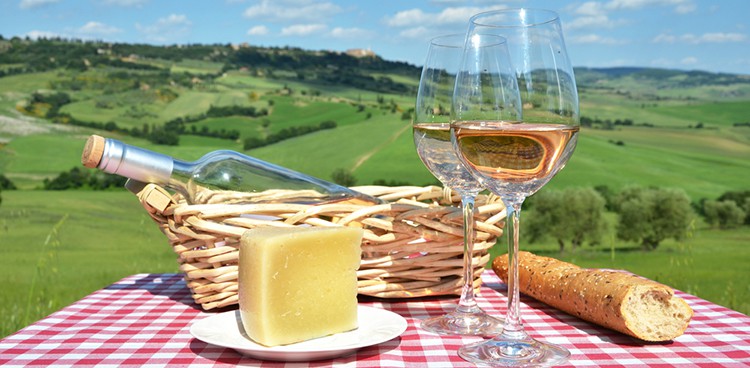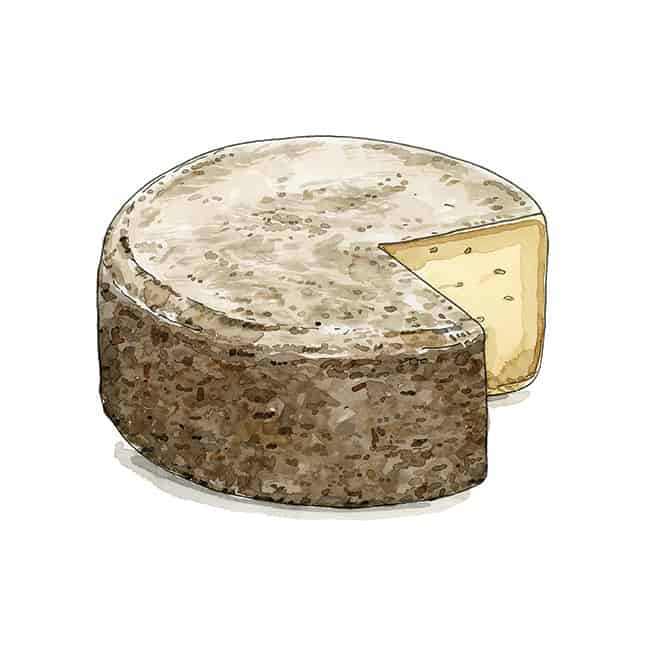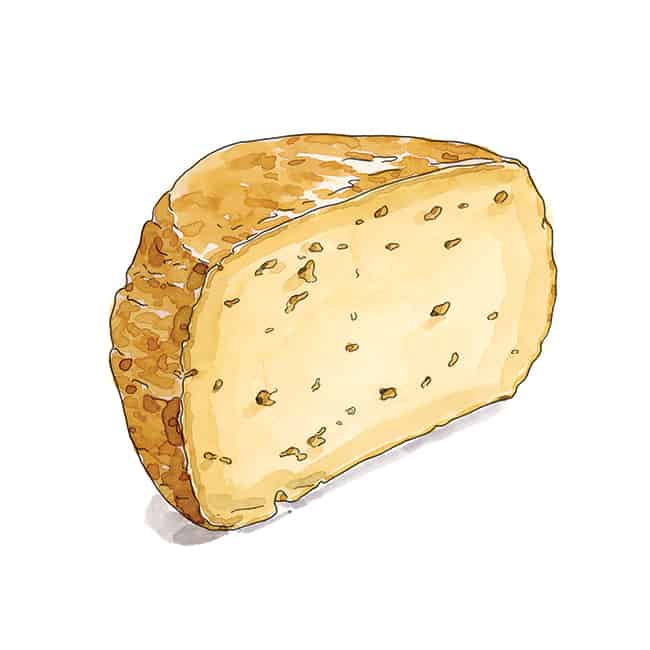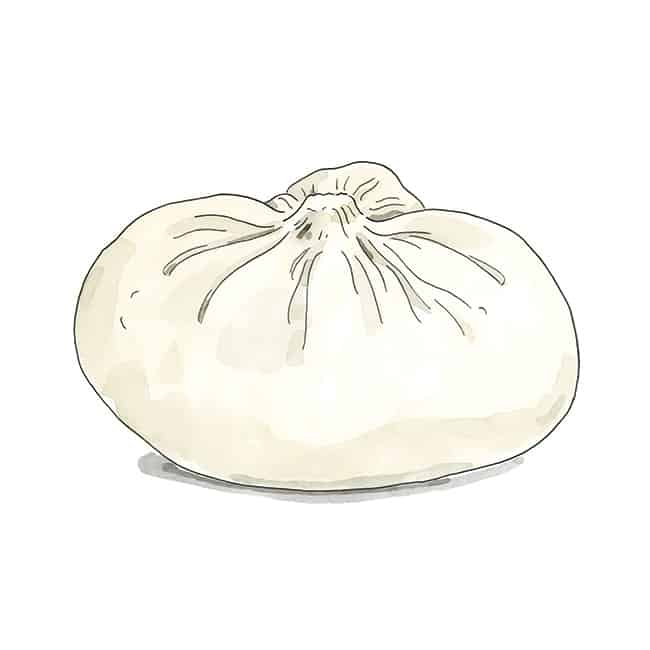
There’s great cheese nearly everywhere you look these days, whether you’re planning to summer in the south of France or ski the slopes of Canada. Over the next few weeks, we’ll take you to five popular tourist regions—the Alps, the Anglo-Celtic Isles, Australasia, Canada, and the Mediterranean—complete with recommendations for places to visit, fun facts, and of course, some of the best wedges and wheels in the area.
Whether you call it joie de vivre or la dolce vita, most would agree that the people of the Mediterranean have an admirable attitude toward work-life balance. The same can be said of their approach to eating and drinking: The Slow Food movement originated in the northern Italian town of Bra, and the philosophy of preserving local culinary traditions and taking pleasure in sharing meals with others is predominant throughout the countries surrounding the Mediterranean Sea. Of course, the region’s celebrated cuisine itself is a huge draw for visitors, in addition to the art, architecture, beaches, mountains, historical treasures, and mild climate. Cheese-loving travelers to the Med can taste their way through some of the world’s foremost dairy delights; the following eight award winners are among the best of the best.
FIOR DI NATURA SEMISTAGIONATO BIOLOGICO CON CAGLIO VEGETALE
Caseificio Il Fiorino, Roccalbegna, Italy
Fior di Natura is one of the newest cheeses from Caseificio Il Fiorino, which celebrated its 60th anniversary this year. The organic milk for this pecorino is produced by sheep that graze in Tuscany’s Maremma region, home to an impressive diversity of flora and fauna. Thistle rennet imparts a slightly sour, vegetal flavor to the well-balanced cheese, which is aged for 60 to 90 days (semistagionato). “Not everyone was convinced when we decided to make a cheese with vegetable rennet,” says Simone Sargentoni, who runs the caseificio with his wife, Angela Fiorini. “But it adds just the right touch of bitterness—(it’s) light and very pleasant in the mouth.”
GIGLIO SARDO
Argiolas Formaggi, Dolianova, Italy
The recipe for this aromatic, semi-hard pecorino was developed by Ennio Argiolas, who founded Argiolas Formaggi in southwestern Sardinia in 1954. He started out selling the intensely flavored Fiore Sardo, one of the island’s most traditional cheeses, but his clients asked if he could create a new product that was more delicate and subtle. He eventually came up with Giglio Sardo—now the caseificio’s best-selling cheese—made with local sheep’s milk and aged for three to four months.
ORGANIC SHEEP’S MILK FETA PDO
Kourellas, Grevena, Greece
This pure sheep’s milk feta—from Kourellas, Greece’s first organic dairy—has a more intense flavor and creamier texture than feta made with mixed milk, thanks in part to the wild grasses and aromatic herbs that the animals munch. Matured in brine for at least two months, the tangy block is typically served sprinkled with olive oil and oregano, or used in salads, omelets, and spanakopita.
PAŠKI SIR
Paška Sirana, Pag, Croatia
The beauty of this iconic Croatian cheese begins with Paška ovca, the breed of sheep indigenous to Pag, a barren, windy island with an almost lunar landscape. Though the animals produce only a half liter of milk a day, the liquid is rich and aromatic, with an herbaceous salinity thanks to the sheep’s unique diet of seawater-coated vegetation. Aged one year, Paški Sir is buttery and moist, with a pronounced but not overpowering saltiness and a hint of butterscotch.
BLEU DU QUEYRAS
Fromagerie de la Durance, Guillestre, France
This balanced blue is made with the raw milk of cows that graze in the remote mountainous Queyras region of southeastern France. Milder and drier than Roquefort, Bleu de Queyras is aged for a minimum of six weeks and up to three months. Manager Christelle Alberge, whose father founded the fromagerie 25 years ago, says the goal is for the cheese to become increasingly peppery while remaining creamy as it ages. She suggests enjoying it with crusty bread or pain d’épices (spice cake).
CALA BLANC
Lacto Industrial, Menorquina Ferreries, Spain
Cala Blanc is the first non-Mahon cheese to come from the Spanish island of Menorca, according to importer Michele Buster of Forever Cheese, who challenged cheesemaker Pedro Pons to create something new. The winning result is this washed-rind cheese made from pasteurized, grass-fed cow’s milk. It’s mushroomy and relatively stinky, with small eyes in the paste and a beautiful golden hue.
QUESO FRESCO
Granja El Parral, Barxeta, Spain
A family-run farm and dairy in the village of Barxeta in Valencia, Spain, Granja El Parral uses a blend of sheep’s and cow’s milk from its own free-roaming herds to produce this queso fresco. “As soon as it is prepared and refrigerated, it is ready to be sold—we sometimes distribute it to clients the same day it was made,” says fourth-generation owner Jesús Calabuig. “It contains all of the flavors of the fresh milk.” The versatile cheese is a tasty addition to salads and appetizers and is also traditionally served fried or grilled.
ANDAZUL
Queso Azul, Cádiz, Spain
Made with the milk of the endangered Payoya goat, Andazul is the brainchild of Ana Isabel Rosado—and the first goat’s milk blue cheese from Spain’s Andalusia region. It is also distinctive in that Rosado rubs the rind with extra virgin olive oil after it has been aged for three to four months. The result is a fudgy, buttery, approachable blue with a touch of mineral tang.
FUN FACTS:
- Of the 750 million olive trees cultivated around the world, 95 percent are in the Mediterranean region, and 93 percent of European olive oil comes from Spain, Italy, and Greece.
- The Spanish town of Buñol is the home of the world’s largest food fight, La Tomatina festival, during which thousands of people take to the streets pelting overripe tomatoes at one another on the last Wednesday of each August.
- Traditional Cheesy Dish: Tortelli Maremmani—Cheese and pasta are united in a multitude of mouthwatering ways throughout Italy, but in southern Tuscany, tortelli maremmani reign supreme. Stuffed with a mixture of local sheep’s milk ricotta, Pecorino Toscano, spinach, and a dash of nutmeg, the square tortelli are typically served in a meat or boar ragù, lightly showered with more grated pecorino.
- Traditional Cheese Pairing: Olive Oil and Paški Sir—Order Paški Sir in a Croatian restaurant and the sheep’s milk cheese typically arrives drizzled with local olive oil. Depending on the characteristics of the oil and the age of the Paški Sir, the pairing can bring out the nuttiness and buttery notes of the cheese, or tone down its salinity.







